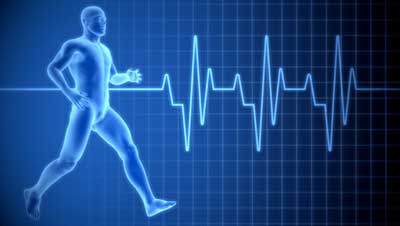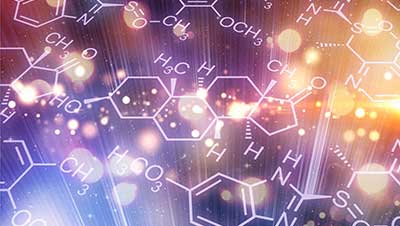


The topics proposed focus on some muscle diseases which cause muscle, performance and strength loss from 40 years old; as consequence the body gradually loses physical fitness with a deterioration of quality of life. For this reason it is very important to prevent muscle and strength loss since young age.
Sarcopenia etymologically derives from Greek and it means “misery of flesh”. Sarcopenia is an aging condition including a progressive loss of muscle mass.
Sarcopenia is considered an inevitable muscle loss which begins since middle age. Several studies recently have shown that this process begins around 40 years old and it advances differently in every person. The Sarcopenia progression is slow around middle age and it becomes fast from 60.
Sarcopenia causes a progressive decadence of the body which shows fatigue, and strength loss making daily activities hard. In fact the typical sign is an “unsteady and slowed down walk” with a hardship to get up and down stairs too.
It is accepted that Sarcopenia is related to aging but some factors accelerate the progression of muscle mass loss.
Disordered eating and low physical activity or an excess of aerobic exercise not coupled with adequate protein and calorie intake accelerate muscle mass loss with the body showing the first signs of aging at a young age.
Physical exercise is useful for keeping active and strengthen muscles (for example walking) but some targeted exercises are helpful to slow down muscle aging:


No therapy is able to treat Sarcopenia, but lifestyle and healthy eating are considered the first approach to slow down muscle aging. From young age it is suggested as followed:
Adequate high biological value protein intake is essential for muscle health; the recommended dose is 1 gr/Kg of body weight. Food sources of high biological value proteins are eggs, milk, milk products, meat and fish.
In addition Magnesium intake is essential for muscle health and it supports protein muscle synthesis.
Cachexia is a pathological condition which causes a progressive and continuous weight loss even with adequate caloric intake. Under cachexia the patient loses muscle mass and body fat. Age-related cachexia is an extreme malnutrition state involving aged patients. It is often associated to related diseases such as: Parkinson’s disease, dementia, or final state cancer especially after prolonged chemotherapy.
Cachexia is often coupled to cognitive impairment: loss of intellectual and behavioural skills.
Several scientific studies have shown that cachexia is related to impaired production of some metabolic substances such as:



Cachexia treatment is hard because it is related to primary disease. If muscle mass loss is associated to an acute illness the treatment includes a specific cure for the primary disease. For example infections such as: hepatitis, pneumonia, pancreatitis or muscle skeleton diseases (arthritis, arthrosis) or diabetes, hyperthyroidism, pituitary diseases, which involve abnormal somatropin production, are often associated to muscle mass loss.
The strategy to reduce muscle mass loss and cachexia in these patients includes:
Under medical prescription cachexia is treated with artificial nutrition.

Under pathological condition or nutritional deficiencies as shown above it could be helpful to include food supplements into the diet under medical supervision,
even if food supplement do not require any prescription.
Food supplements are not substitutes for a healthy diet but complements of a well-balanced diet.
HMB means beta hydroxymethylbutyrate produced by an essential amino acid: the leucin. HMB is able to induce an increased protein synthesis (improvement of muscle mass) and it is able to reduce muscle degradation whereas leucine or other amino acids are not effective. In addition HMB is able to remain in blood longer than leucine and so induces a prolonged anabolic and anti-catabolic impulse (muscle mass building instead of degradation). HMB is a metabolite produced by human liver using specific enzymes (transaminase). Severals studies have shown that HMB intake has benefits in some muscle wasting conditions such as: Sarcopenia and Cachexia. As mentioned above HMB is able to induce muscle mass building and to reduce muscle mass degradation. Therefore muscle mass is closely linked by the balance between building and degradation: anabolism and catabolism. Many food supplements for sports include HMB just to induce muscle mass strengthening. The anabolic and anti-catabolic features of HMB have been shown by many studies made on fragile and aged patients in order to demonstrate its safety and effectiveness. The effective dose of HMB supported by scientific studies is 1, 5-3 g a day.

Carnosine is composed of two amino acids: histidine and alanine.
In nature carnosine is in the muscles of vertebrates and it has been studied because it seems to promote muscle recovery.
In addition Carnosine is able to protect fibroblast in order to preserve skin, muscle tone and flexibility and it is able to remove post exercise induced lactic acid. This feature is very appreciated by athletes and it is called buffer effect. Carnosine also has been known to be a muscle antioxidant able to protect cells from free radicals. According to all premised Carnosine recommended intake is between 100-500 mg per day.
Magnesium is wide spread in human body and together with Calcium, Potassium and Zinc takes part in many enzymatic reactions.
In some pathologic or sub clinic conditions a Magnesium deficiency can take place and typical symptoms are: fatigue and weakness.
Recommended Magnesium intake is 300 mg a day to be effective as follows:
Lactoferrin is a protein of saliva, tears and breast milk. It has strong antibacterial and antiviral properties and it is important for newborn gut development. Lactoferrin is currently included in several food supplements to improve immune defence and for Iron absorption.
Butyrate as Butyric acid is produced by “good gut microbiota”.
Body wellness depends on intestinal health: a gut with a balanced microbiota and an intact intestinal barrier protects the body from toxic substances, virus and bacteria attacks.
The intestinal balance protects the body from general inflammation involving all body organs such as: muscles, liver, bones, joints etc. This kind of inflammation, if not counteracted, degenerates to several diseases. A microbiota and barrier impairment cause gut mucosa inflammation which affects nutrient absorption and normal digestion including that of lactose (lactose intolerance). The protection of intestinal health is a key point to preserve whole body health at any age.

